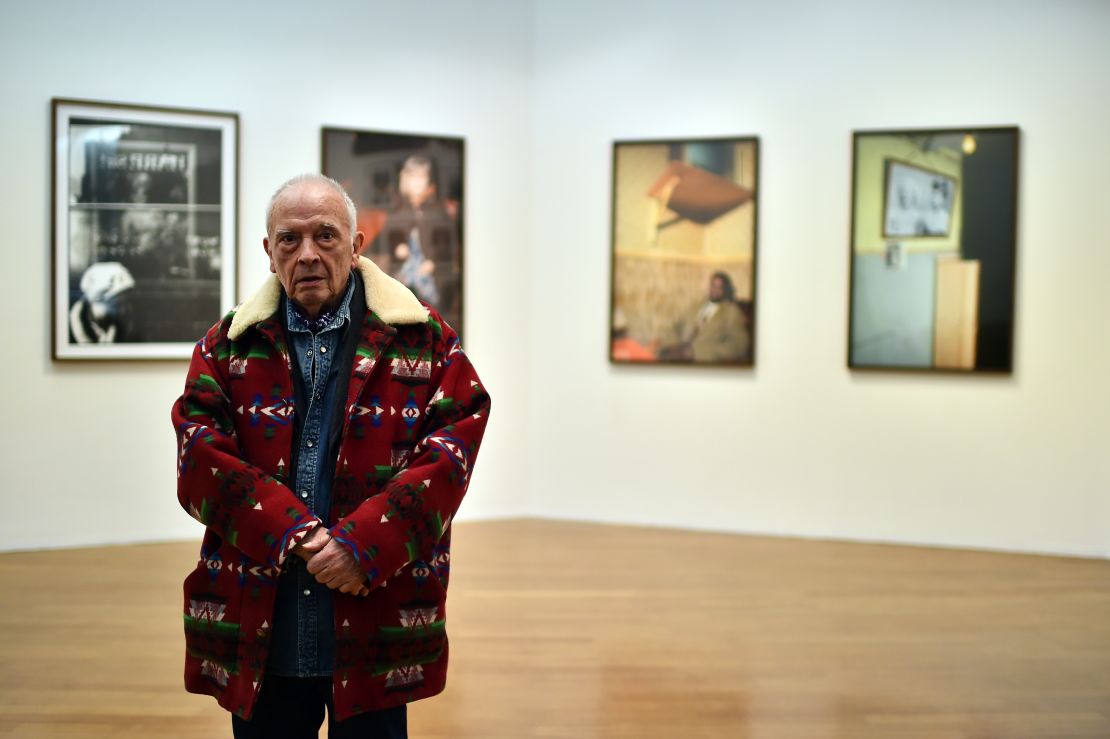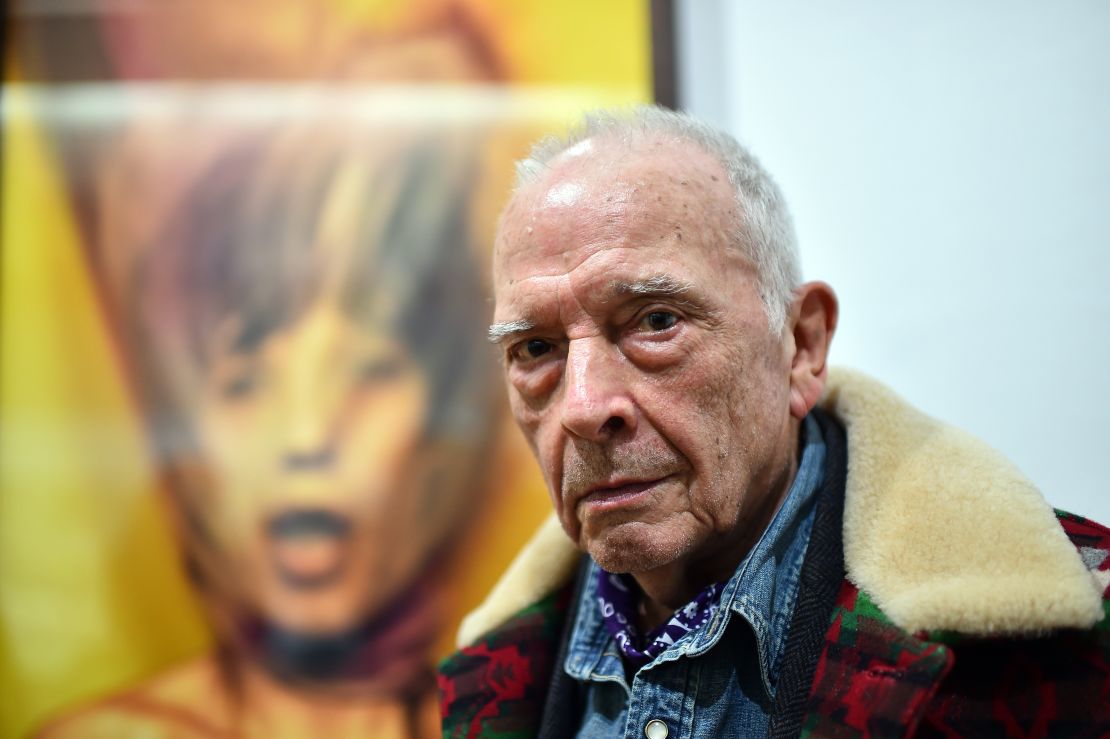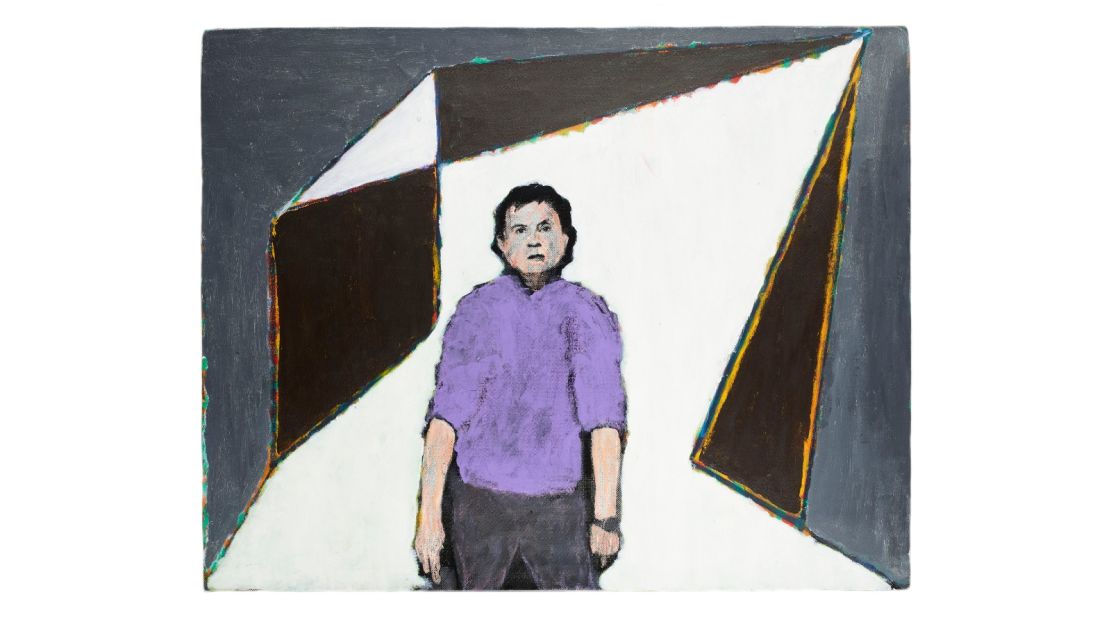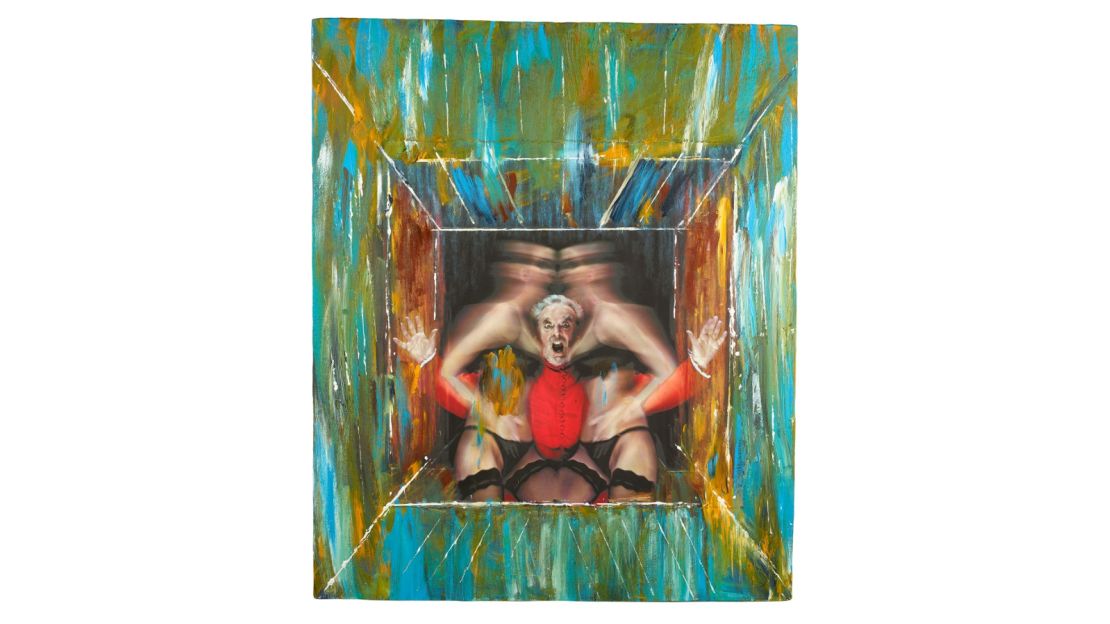“It’s not a mistake,” says Bailey. “It’s just an accident.” “Big difference.”
The 77-year-old firebrand photographer is slouched on a sofa in his London studio explaining why his latest book, Tears & Tears, is made up of dirty-looking scraps most people would throw away.
They’re test-strips of photographic paper, unceremoniously torn off by Bailey while tinkering with exposure times for his prints. But the irreverent East Ender has preserved them as art, to be released this September.


“I like it because each one’s unique,” he explains. “You can’t repeat it because you get the stains and the mistakes.”
Accidents, he means. Not mistakes.
These ones are accidents, he says. Like a painter with a dripping brush: “A splash of paint goes somewhere and he goes: ‘Shit, I hadn’t thought of that – let’s explore that.’”
“I’m not going to have someone tell me how a girl should look.”
Bailey, at 77, is the endlessly celebrated authority on “iconic” celebrity portraits – those stark white backgrounds, dramatic lighting, splashes of character emanating from a face or a pose – whose subjects comprise almost everyone properly famous from the middle of the 20th century onward.
His exhibition, Stardust, which opened last Friday at the Scottish National Gallery in Edinburgh, lines the walls with John Lennon, Yves Saint Laurent, Kate Moss, Andy Warhol, Salvador Dali, Jack Nicholson, Johnny Depp, Damien Hirst, Mick Jagger, and David Hockney, among others. At a guess, these make up no more than 1% of the stars who have sat for him.
In fashion shoots since the early 1960s, which are often credited with capturing “swinging London,” Bailey arguably did as much as any one person to invent that world, and it has always been his claim that he doesn’t take pictures, he makes them.
Now, he’s happy to wash his hands of the whole fashion industry, he explains in the airy, sun-filled Bloomsbury mews house that serves as his photography studio.
“Most fashion photography’s pretty crap,” he says. “Not much better than most wedding photography.”
Really?
“Yeah, course it’s not… If it’s good, like [American photographer Richard Avedon or somebody, then it’s exceptional. But the average fashion shoot is like, pffffff,” he waves it off.
For anyone hoping to see Bailey shoot fashion again, he offers dim hopes: “Only for a lot of money!” Bailey chuckles.
That’s the only way?
“Yeah, because I can’t deal with those people.”
“Most people don’t like working with me, especially fashion editors, because I don’t agree with them.
“I’m not going to have someone tell me how a girl should look. A girl looks like I want her to look. If they want her to look like that, either get somebody else, or do it themselves.”
“Let’s explore that”
It’s clear Bailey wears his boorish attitude with pride. He constantly chuckles at his own offhand and unpredictable comments, and presents himself as a man who will take a creative lead from a dripping paintbrush, but never from a Vogue fashion editor.
Yet Bailey’s contempt for fashion’s conventions is what guided him to the top of that world – as a working class cockney outsider who left school at 15 – when the doors of Vogue were usually closed to anyone lacking a refined accent and private education.
Today, his refusal to do what anyone expects him to do means he still has the potential to surprise.
Like the new, adjunct exhibition that accompanies Stardust in Edinburgh, curated by Bailey himself and named Moonglow. In there you’ll find his other projects: oil paintings of balloon-breasted pink women, pictures of his wife (his fourth, model Catherine Bailey) left on Dartmoor to be ravaged by the elements, collages of a bewildered-looking Bailey standing next to Hitler.
Then there are these strange little wooden boxes, harking back to a childhood collecting war shrapnel and pigeon feathers, and now filled with “found objects” (including a dead robin and a Thomas the Tank Engine figurine): “Oh yeah, they’re good… Little museums of curiosities,” he says, delighted.
For any artist who masters one form and dabbles in others (see Ronnie Wood’s acrylics of winged horses or David Bowie’s wooden acting career) it can be hard to tell how seriously they take their sidelines.
But Bailey is more animated discussing his bronzes, oils, and miniature cabinets than he is retreading his history in photography, and he is adamant he’s no Sunday Painter. He reminds that he was an accomplished artist by the time he was 13, when his picture of Bambi (“My two biggest influences are Walt Disney and Picasso” he’s said before) earned him an award from London’s City & Guilds Institute.

“Painting and photography are just two different ways of making an image,” he insists.
I ask about the moment of wonder he has described from his distant youth when he first fell in love with photography: when he learned you could “stick a bit of paper in some coffee-type liquid and a picture comes out.”
“It is bit like being an alchemist,” he says, “or even a shaman, I guess.”
It’s that same process of chemical alchemy that gives birth to the “Tears,” though these are not quite the gilded images we are use to seeing from him, but something murkier and less shiny. But can you get that same moment of abracadabra from oils or sculpture?
“Yeah, of course you do. It’s so satisfying.”
“I like it ten years later. When you see a bronze you’ve done and think ‘Shit. I didn’t like that, but now it’s kind of good. Things take time.”

“You should never have showed the devil”
I ask Bailey if he’s if he has any regrets. After all maybe the “big difference” between an accident and a mistake is that, as time goes by, mistakes are the ones you regret.
“No. Why would you regret something?”
What about Picasso, who twice before the great artist’s death, Bailey was given the opportunity to photograph, but refused?
“I don’t regret it. But I was scared of walking in, seeing this balding old geezer — looking a bit like me now, a bit of a belly — and he farts, and it would completely ruin my opinion of him.” He chuckles.
That’s the danger of meeting your heroes:
“It’s that they fart, yeah.”
It’s best to keep them away, a life lesson Bailey learned from an underwhelming rendezvous with his hero, director John Huston.

“Because you’ve got your own idea of them. I always argued with [film director Roman] Polanski, because he showed the devil in Rosemary’s Baby, and I said: ‘You should never have showed the devil, because my imagination… is a much better view of the devil than you trying to impose one.’”
“It’s like silly love scenes in films. Once they lean on the bed, cut. There’s no mystery now, seeing someone going huh huh huh huh huh.” He mimics some sexual thrusting and chuckles.
With Bailey’s murky, coffee stained-looking Tears, and the assorted mysteries that make up Moonglow, there is a lot more left to the imagination, or interpretation, than in the crisp portraits that viewers are used to seeing from him.
At one moment, he says each book – Tears will be his 45th or 46th, he can’t quite remember – is like a diary, showing a reflection his life at that time.
We’re left to wonder what all these little explorations and accidents van tell us about Bailey at 77, but the best guess might be to say his most defiant, experimental period is just beginning.





















